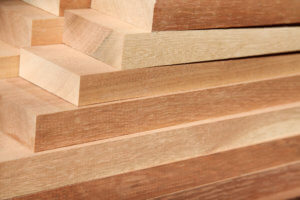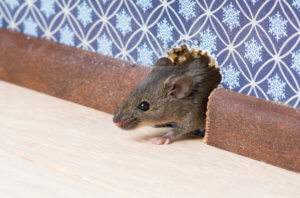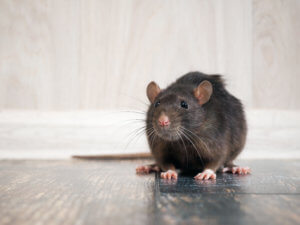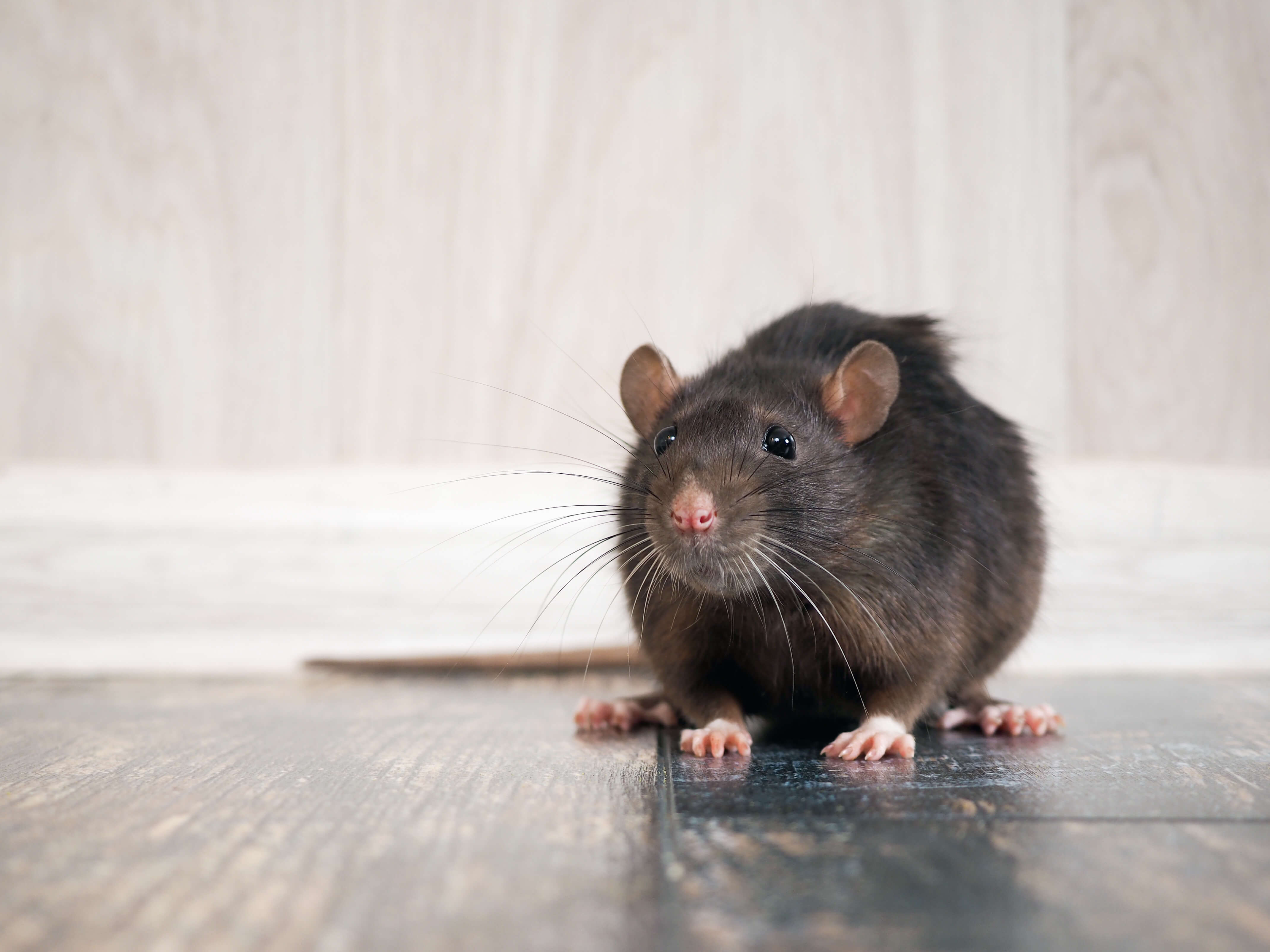
Rats can be extremely dangerous to humans (see “Why Rats Are Dangerous“) and they multiply super fast, so it is really important that you take care of any rat infestation in your house as quickly as possible.
In addition, rats can do a ton of damage to your home and produce some seriously unbearable smells, if left unchecked.
Follow this step by step guide to help ensure a rat free home.
So, without further ado, “Let’s get them Rats!”
Step 1: Scan the house, garage, and attic for rat droppings to determine the rat’s walking path
The first thing we need to do is to identify where these rats are hanging out and where their normal traveling paths are (rats always prefer to travel along the same paths). By finding the droppings, it will identify these locations so we can place the traps accordingly. Start by walking along the entire interior perimeter of the house, garage and attic to see if you can locate any rat droppings (see picture below of a Rat Dropping next to a Nickel for size comparison). This process might consist of moving boxes or clutter in less frequented areas of the home, but, honestly, these areas are more likely where the rats are hiding. If you locate the nest, there will be a very large abundance of droppings, and the traveling paths will have a dropping or two every so many meters along the wall.
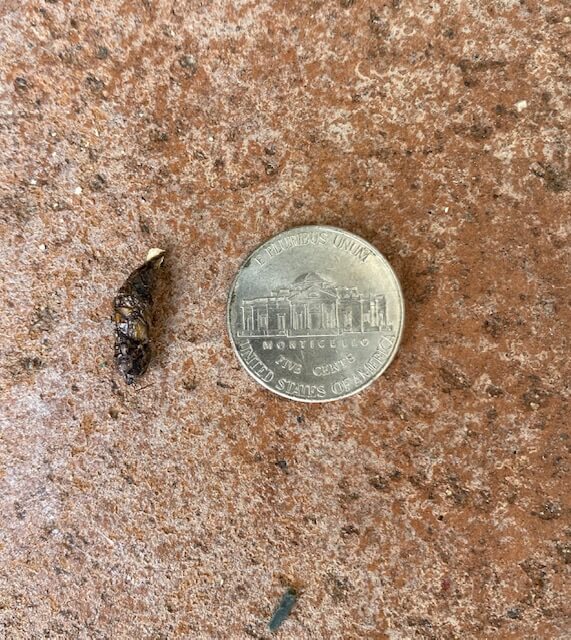
Step 2: Place Rat Snap Traps Flush Against the Wall of the Rat’s Walking Path
I prefer to use the Tomcat Rat Snap Traps as they are super easy to set. I would suggest picking up at least 3-4 to place along the different walking paths identified. As briefly mentioned in Step 1, Rats always like to travel along the same paths, so we need to ensure we are placing the trap along this normal walking path. Once the path has been identified, place the trap flush against the wall (with the lengthier side of the trap against the wall) to ensure a higher chance of success. I would suggest baiting with Peanut Butter as it sticks to the bait cup, and would be very difficult to remove without setting off the trap.
Step 3: Follow CDC Guidelines for How to Properly Cleanup After Rodents
Rodents carry more human infectious diseases than any other organism on the planet (other than mosquitoes). So, in other words, they are HIGHLY DANGEROUS to humans! The vast majority of these diseases are transmitted through the feces of the rodent. You need to be extremely careful when cleaning up after rodents, so I would highly suggest checking out the guidelines here on the CDC website.
Step 4: Plug up any points of entry to the house with Steel Wool
Take a walk around the perimeter of your home to see if you can identify any points of entry in which rats are entering the home. Rats can fit through a hole the size of a quarter, so these are the areas we would want to target. If you have identified any points of entry, you would want to plug them up with a steel wool product called, Xcluder – Rodent Control Fill Fabric. Rats can chew through very hard materials, including copper, but they cannot chew through steel and this product is specifically designed for this purpose.
Step 5: Repeat Steps 1-3 Until No More Signs of Rats
Once all dead rats and feces have been properly disposed of, go through Step 1 to ensure there aren’t any new droppings being found. I would suggest going through this process once every few days initially, and then once a week, month, and so forth. If there are rats in the house, it will quickly become apparent with new sightings of rat droppings.
I hope that this article has been helpful for you! If you have any questions or comments, please leave them below and I will respond as soon as possible.
Thank you!!
RKD
